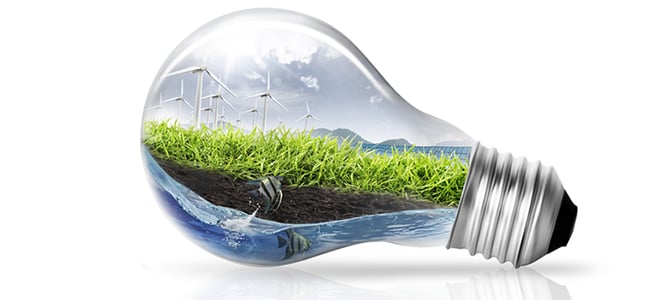LED Lighting
LED lighting is a highly efficient and long-lasting alternative to traditional lighting solutions, offering significant potential for reducing energy consumption and greenhouse gas emissions in various sectors.

Environmental protection of LED lighting (Solar Electric Power Company)
View open jobs in this Solution
Example Companies
- Philips Lighting - Develops innovative LED lighting solutions for various applications.
- Cree - Pioneers in LED technology and applications.
- GE Lighting - Offers a wide range of LED lighting products for residential and commercial use.
- Osram - Provides LED lighting solutions for various industries and applications.
- Acuity Brands - Specializes in lighting and building management solutions, including LED technology.
Overview
LEDs are highly efficient compared to traditional incandescent bulbs and boast longer lifespans, substantially curbing greenhouse gas emissions. Leading companies such as Philips and GE have actively contributed to this cause, working to make LED lighting affordable and accessible.
Progress Made
Since the inception of the first light-emitting diode (LED) in 1907, remarkable progress has transpired in utilizing LED lighting to combat climate change. By 2018, LEDs were estimated to have spared 140 million metric tons of CO2, equivalent to a year's emissions from 30 million cars.
Key advancements include:
- Enhanced Efficiency: LEDs require only 10% of the energy consumed by incandescent bulbs for the same light output.
- Precise Light Control: LEDs offer directed illumination, diminishing the need for overall artificial lighting.
- Extended Lifespan: LEDs can function up to 100,000 hours, reducing replacement frequency.
Solutions by Sector
Residential Lighting
- Smart LED Bulbs: Connected lighting systems that can be controlled remotely.
- LED Fixtures: Integrated LED solutions for various home applications.
- Outdoor LED Lighting: Energy-efficient solutions for landscaping and security lighting.
Case Studies:
- Philips Hue: Smart LED lighting system for homes, offering customizable and energy-efficient lighting (Philips Hue).
- Cree LED Bulbs: Affordable LED replacements for traditional incandescent and CFL bulbs (Cree).
- GE Lighting C by GE: Smart LED bulbs and fixtures that integrate with voice assistants (GE Lighting).
Commercial and Industrial Lighting
- LED Troffers: Energy-efficient replacements for fluorescent ceiling lights.
- High-Bay LED Lighting: Powerful LED solutions for warehouses and industrial spaces.
- LED Street Lighting: Energy-efficient and long-lasting solutions for urban lighting.
Case Studies:
- Los Angeles LED Street Lighting Program: Citywide conversion to LED street lights, resulting in significant energy savings (City of Los Angeles).
- Walmart LED Retrofit: Large-scale conversion to LED lighting in stores and parking lots (Walmart).
- Amsterdam Arena LED Lighting: Installation of energy-efficient LED lighting system in a major sports venue (Philips Lighting).
Horticultural Lighting
- LED Grow Lights: Specialized lighting solutions for indoor farming and greenhouses.
- Vertical Farming Lighting: LED systems designed for multi-level crop production.
- Greenhouse Supplemental Lighting: LED solutions to extend growing seasons and improve crop yields.
Case Studies:
- AeroFarms Vertical Farm: Large-scale indoor farming operation using LED lighting to grow crops year-round (AeroFarms).
- Philips GreenPower LED: Horticultural lighting solutions used in various greenhouse and vertical farming applications (Philips).
- Fluence by Osram: LED grow light solutions for cannabis cultivation, resulting in increased yields and energy savings (Fluence).
Lessons Learned
- Design and Installation: Proper design and installation are pivotal, along with high-quality components and ongoing maintenance.
- Holistic Perspective: Considering an LED light fixture's entire lifecycle is crucial in decision-making.
- Energy Efficiency Success: LED lights drastically decrease energy consumption, subsequently lowering greenhouse gas emissions.
- Challenges and Failures: Challenges include high initial costs and the presence of hazardous materials in some LED lights.
Challenges Ahead
- Novelty: Overcoming resistance to new technology adoption.
- Infrastructure: Developing the necessary infrastructure for widespread LED adoption.
- Costs: Reducing the higher upfront costs compared to traditional lighting options.
- Environmental Concerns: Addressing the presence of hazardous materials in some LED products.
Best Path Forward
- Enhancing Efficiency: Continual research to maximize LED efficiency.
- Affordability: Strategies to lower LED costs, ensuring broader accessibility.
- Awareness: Public education on LED benefits and proper usage.
- Business and Government Adoption: Encouraging entities to transition to LED lighting.
- Policy Support: Implementing regulations and incentives to promote LED adoption.
Image credit: Solar Electric Power Company